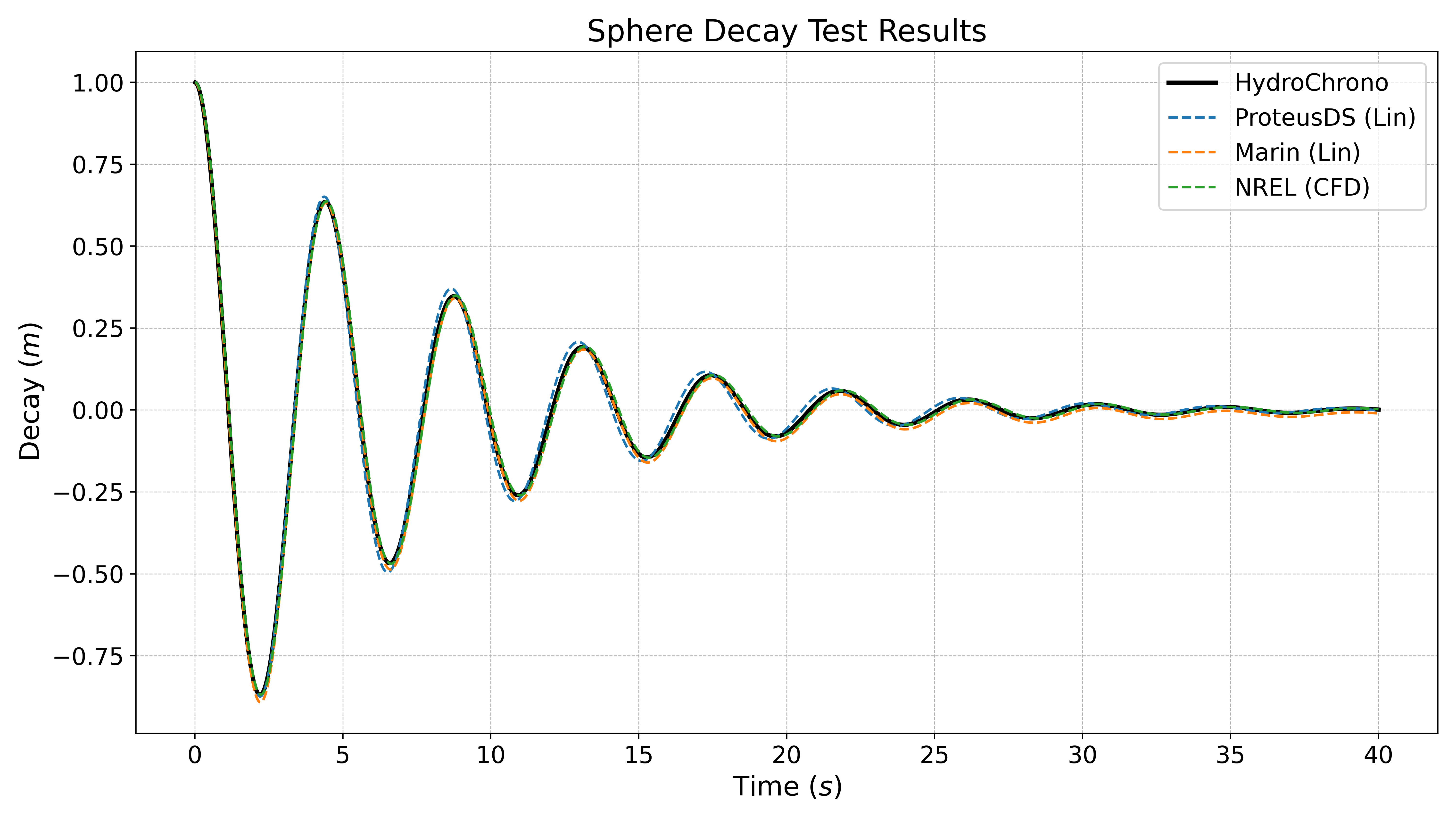Sphere Model (IEA OES Task 10) - Verification
Overview
Developed under the IEA OES Task 10 project, the Sphere Model serves as a simplified wave energy converter (WEC) for verifying numerical modeling software. This verification encompasses various tests, including still water decay and dynamic responses in regular and irregular wave conditions, some incorporating a damping coefficient to represent power take-off (PTO).

Model Parameters
Key physical parameters of the Sphere Model, like center of buoyancy, center of gravity, and volume displacement, are essential for hydrodynamic analysis:
| Name | Symbol | Value | Units |
|---|---|---|---|
| Water Density | \( \rho_{\text{water}} \) | \( 1 \times 10^3 \) | kg/m³ |
| Gravity | \( g \) | 9.81 | m/s² |
| Water Depth | \( d \) | \( \infty \) | m |
| Sphere Mass | \( m \) | \( 261.8 \times 10^3 \) | kg |
| Sphere Radius | \( r \) | 5 | m |
| Sphere Centre | \( \mathbf{C}_{\text{centre}} \) | \( [0.0, 0.0, 0.0] \) | m |
| Sphere Center of Gravity | \( \mathbf{C}_{\text{G}} \) | \( [0.0, 0.0, -2.0] \) | m |
Results
The model’s heave response data is analyzed for verification:

The verification results establish the model’s reliability in simulating hydrodynamic behaviors. While these tests offer a strong foundation for confidence in the model’s performance, ongoing verification efforts are necessary to continually verify and validate the code.
References
For detailed information about the Sphere Model, refer to the following source:
- Wendt, F. F., et al. (2017). International Energy Agency Ocean Energy Systems Task 10 Wave Energy Converter Modeling Verification and Validation. Retrieved from OSTI.gov